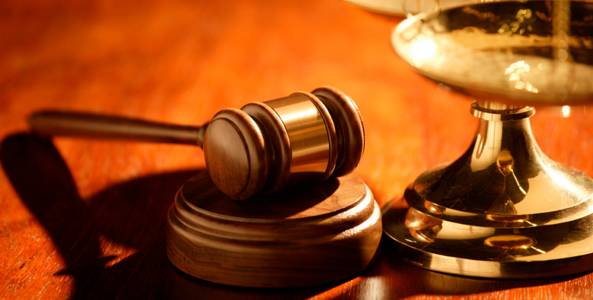Case Law Update-Federal
Patent damages require thorough analysis and attention to detail
This federal case update highlights patent cases where reports or testimony from damages experts were excluded and affirmed. Â Regardless of outcome, these cases have a similar theme; it appears that some damage experts should perform a more thorough analysis and pay more attention to detail than they currently do.

Case Law
Brandeis University, et al. v. Keebler Co., et al. (2013 U.S. Dist. LEXIS 18948):  The district court stated that “Keebler would not have paid a royalty higher than the cost to it of switching to a non-infringing substitute …or otherwise reworking its manufacturing process…” After identifying this measure of damages, the court concluded that the plaintiffs’ expert’s reasonable royalty damage calculation was not based on acceptable methodologies because she failed to consider the costs to the defendant of switching to a substitute (even if an imperfect one). Rather, she based her analysis on the profits that were at risk if a license was not granted and license agreements that the court deemed to be non-comparable to the patents in suit or the relevant negotiation between these parties.
Promega Corporation v. Applied Biosystems, LLC, et al. (United States District Court for the Northern District of Illinois, Eastern Division, matter No. 13-cv-2333 (docket item #378, filed May 28, 2013).):  The court excluded portions of the proposed damage testimony from both sides’ expert witnesses. The plaintiff’s reasonable royalty rate was the mid-point of a range of royalty rates from a population of license agreements entered into by one of the parties to the litigation. The court determined that, “[u]sing the midpoint of a range of royalty rates in disparate licenses for unknown different inventions as the estimate of a reasonable royalty for a license for Promega products outside the field of use of the 2006 patent is arbitrary” and that “generalized impressions are no substitute for a method of computing, and evidence justifying, a reasonable royalty rate.” Since the defendants’ expert conceded that a prior cross-license (between the same parties) would suggest a royalty rate of 2 percent, the court determined that there may not be a need for expert testimony on the royalty rate and asked the parties to submit additional briefing on this issue.
In the two cases summarized above, the court excluded the experts while appearing to indicate that each should have paid more attention to the details and facts of their cases. For example, both experts were found to have inadequately assessed the comparability of license agreements that they sought to use as data points in their assessment of a reasonable royalty.
In the two cases described below, the experts’ reports and testimony were not excluded; however, the rulings also highlight the importance of grounding damage analyses in the facts and circumstances of the case.
Synqor, Inc. v. Artysyn Technologies, Inc., et al. (2013 U.S. App. LEXIS 5051): The federal circuit upheld a $95.3 million lost profits and reasonable royalty damage award that was based on the jury’s adoption of the plaintiff’s expert’s damages model.  Both elements of the damage award were based on “but for” prices that Synqor claimed it would have been able to charge absent the infringement (in essence, arguing that the infringement caused price erosion). The “but-for” prices were two to three times higher than the prices charged by the defendants for their infringing products. Given the testimony that was offered at trial regarding sales that were made at the higher price levels, the federal circuit found that, “both the lost-profits and reasonable royalty damages are supported by substantial evidence and not excessive or based only on speculation and guesswork.”
SSL Services, LLC v. Citrix Systems, Inc., et al. (2013 U.S. Dist. LEXIS 4275):  The district court denied the defendants’ post-verdict motions seeking to overturn a $10 million lump-sum damages award (the damage claim put forward by the plaintiff’s expert).  The royalty rate that the plaintiff’s expert used to arrive at the lump sum damage amount was derived from prior agreements between a predecessor company to the plaintiff and the defendant.  The defendants argued that these agreements should not have been allowed as evidence in the case, “because they are not sufficiently comparable to the non-exclusive domestic patent license that would result from the hypothetical negotiation of a Georgia-Pacific analysis.” While agreeing that there were differences, the district court also pointed to testimony from the plaintiff’s expert regarding similarities and the relevance of the agreements to other Georgia-Pacific factors.  The court also noted that the defendants’ damages expert admitted that, “as far as we know, that’s as close as – to comparable as we’re going to get.”
In these two cases, it appears that the damage experts understood the factual testimony (e.g., what prices were charged in the market) that would be offered at trial and were able to testify about the work that they had performed to demonstrate that the bases (e.g., why a license agreement is relevant) for their opinions were reasonable. Because these experts’ opinions were based on what the courts determined was sufficient testimonial evidence, their opinions were upheld.
[author] [author_image timthumb=’on’]http://m.c.lnkd.licdn.com/mpr/mpr/shrink_200_200/p/1/000/078/138/2126b3b.jpg[/author_image] [author_info]Mr. Keith Hock is a director, Financial Advisory Services, for GBQ Consulting LLC, a consulting and accounting firm with offices in Columbus, Cincinnati, Indianapolis, New York and Philadelphia. Mr. Hock is a Certified Public Accountant, Certified in Financial Forensics, a Master Analyst in Financial Forensics, and a Certified Valuation Analyst with more than 22 years of accounting and finance experience, including more than 20 years providing advisory services to attorneys and clients involved in disputes or litigation. Mr. Hock has testified at trial, arbitrations, depositions, and performed damage analyses involving lost sales, profits and cash flows; incremental profits; reasonable royalties; business valuations; insurance claims; unjust enrichment; and prejudgment interest. His experience also includes engagements involving disputes related to the appropriate application of generally accepted accounting principles and/or generally accepted auditing standards. He has also performed investigations related to accounting re-statements, fraud and other inappropriate business practices.[/author_info] [/author]









